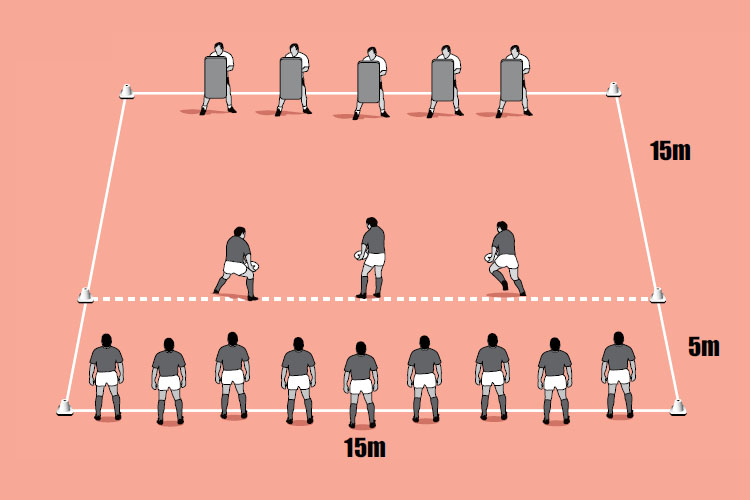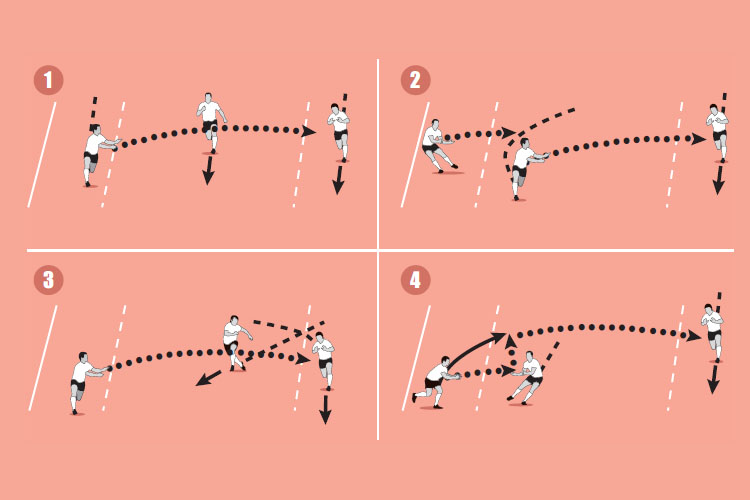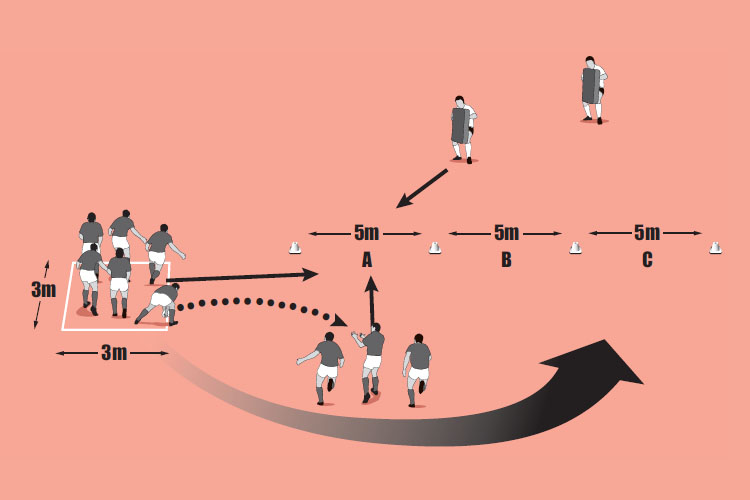Rapido ruck

Rucking is a fundamental part of the game. This practice will help you pinpoint your players’ effectiveness at rucking, both in terms of their skills and techniques to produce quick, clean ball, but also their reading of the game – their understanding of when and where the breakdown will occur.
Warm up time: 7-10
Session time: 5-10
Development time: 5-10
Game time: 10-15
Warm down time: 7-10
What to think about
Are your players rucking “through the gate”? Players must join the ruck from behind the hindmost feet of their own team, “through the gate”. Not only is it legal, it is also good practice because they are likely to be in the best positon to drive out opposition players and protect the ball. Do you want you players to “ruck beyond the ball”? If you are rucking in numbers then players should “ruck beyond the ball” to allow the support players the clearest view and route to the ball. However, if there is little support, then the rucking player should stop over the ball to protect it from the opposition.set-up
- Decide how many of you are needed to win a quick ruck.
- Use good technique in the rucks, staying on your feet.
What you get your players to do
Set up as the “Rapido ruck” diagram. Name the three ball players, each with a different colour. When you call out a colour, that ball carrier attacks the try line. The attackers, starting 5 metres back, move in support, and the pad men, standing 15 metres ahead, move to defend. Any contact with a pad represents a tackle, causing the ball carrier to go down and place the ball. The attackers have to assess the situation, allocate players to support the ball carrier and ruck over to secure the ball. The scrum half passes the ball back to an attacker not involved in the ruck, to take on the original ball carrier’s position and colour. Repeat the exercise for a total of 90 seconds, counting the number of successful rucks completed.Thank you for reading
to enjoy 3 free articles,
our weekly newsletter, and a free coaching e-book
Or if you are already a subscriber, login for full access
Newsletter Sign Up
Coaches Testimonials

Gerald Kearney, Downtown Las Vegas Soccer Club

Paul Butler, Florida, USA

Rick Shields, Springboro, USA

Tony Green, Pierrefonds Titans, Quebec, Canada
Subscribe Today
Be a more effective, more successful rugby coach
In a recent survey 89% of subscribers said Rugby Coach Weekly makes them more confident, 91% said Rugby Coach Weekly makes them a more effective coach and 93% said Rugby Coach Weekly makes them more inspired.
Get Weekly Inspiration
All the latest techniques and approaches
Rugby Coach Weekly offers proven and easy to use rugby drills, coaching sessions, practice plans, small-sided games, warm-ups, training tips and advice.
We've been at the cutting edge of rugby coaching since we launched in 2005, creating resources for the grassroots youth coach, following best practice from around the world and insights from the professional game.













